What Is the Difference Between CNC Turning and Milling?
Computer numerical control (CNC) machining is a manufacturing process that uses computerized controllers to operate machine tools. This technology has been around for decades and has been used extensively in the aerospace, medical, industrial, and electrochemical industries.
CNC milling and turning are two of the most common processes in CNC machining. Though both involve the use of computer-controlled machinery, there are several key differences between the two.
Here, we will take a closer look at those differences to help you better understand which process is right for your project.
What is CNC turning?
CNC turning is a machining process that uses computer numerical control (CNC) to rotate a workpiece while it is held in a chuck. This rotating motion, combined with the movements of the cutting tool, allows for precise and repeatable machining of cylindrical parts.
CNC turning can be used to create parts of various shapes and sizes, from small components to large-scale workpieces. The process is well suited for high-volume production and one-off parts, making it a versatile manufacturing solution.
CNC turning is a subtractive manufacturing process, meaning that material is removed from the workpiece to create the desired shape. The process can be performed on various materials, including metals, plastics, and composites.
Let’s dive into the benefits of using CNC lathes for turned parts.
The benefits of CNC turning
The benefits of CNC turning are numerous and can be extremely helpful in a variety of manufacturing settings. The most obvious benefits are the following:
- CNC turning can significantly increase the speed and accuracy of production.
- CNC turning can produce parts with very tight tolerances.
- CNC turning can create complex shapes that would be difficult or impossible to create using other methods.
- CNC turning is a very fast and efficient way to produce parts in large quantities.
- CNC turning can be used to produce parts from a variety of materials, including metals, plastics, and composites.
- CNC turning is a very versatile manufacturing process that can be used to create a wide variety of parts and products.
Another significant benefit of CNC turning is that it can help to reduce the amount of waste produced during manufacturing. This is because CNC machines can be programmed to produce parts with very specific dimensions, which reduces the need for material trimming or other forms of waste.
Overall, the benefits of CNC turning can be beneficial for a variety of manufacturing businesses. CNC machines can help to improve the speed and accuracy of production while also reducing waste. These benefits can ultimately lead to increased efficiency and profitability for a business.
Now, let’s talk about CNC milling.
What is CNC milling?
CNC milling is a machining process that uses computer-controlled rotary cutting tools to remove material from a workpiece. Tool paths are created from a CAD file and uploaded to the CNC machine, which then controls the motion of the tool to remove material and create the desired shape. The process can be performed on various materials, including metals, plastics, and composites.
CNC milling is a versatile machining process that can be used to produce a variety of parts with a high degree of accuracy. CNC milling can also be used to produce parts with a variety of surface finishes. It is commonly used in the aerospace, automotive, medical, and energy industries.
So why should you use CNC milling?
The benefits of CNC milling
CNC milling offers a number of benefits over traditional machining methods. The following are some of the most notable benefits of CNC milling:
- CNC milling allows for precise and repeatable machining of parts.
- CNC milling can be used to create complex shapes and geometries.
- CNC milling can be used to create parts with a high degree of dimensional accuracy.
- CNC milling can be used to create parts with a smooth surface finish.
- CNC milling can be used to create parts with various material properties.
- CNC milling can be used to create parts with different thicknesses and sizes.
Overall, CNC milling is a popular manufacturing process due to its many benefits, including increased accuracy and repeatability, increased productivity, increased versatility, and reduced waste. This technology can be used to create a wide variety of parts and products, from simple prototypes to complex end-use components.
Final thoughts: Difference between CNC turning and milling
CNC milling and turning are both processes that are used to create parts and products from raw materials. Both processes can be used to create a variety of different shapes and sizes, and both require the use of a CNC machine.
However, there are some key differences between CNC milling and turning. CNC milling involves rotating cutting tools to remove material from a stationary workpiece, which is typically square or rectangular. CNC turning utilizes a lathe to rotate primarily round bar stock while using cutting tools to remove material.
Ultimately, the decision of which process to use depends on your project’s specific requirements. CNC milling and turning can produce high-quality parts and products.
What is Precision Machining?
Precision machining has become essential to the manufacturing sector. This subtractive manufacturing process often pairs expert designers and engineers with the most advanced equipment available to create parts and components with extremely intricate or complex geometries. Precision machining is essential for the creation of many critical parts used in numerous industries, including the aerospace, electronics, and medical industries.
Methods of Precision Machining
Precision machining relies on the use of advanced, computerized machine tools to achieve demanding tolerances and create complex geometric cuts with a high degree of repeatability and accuracy. This can be achieved through the use of automated computer numerical control (CNC) machine tools.
CNC Machining
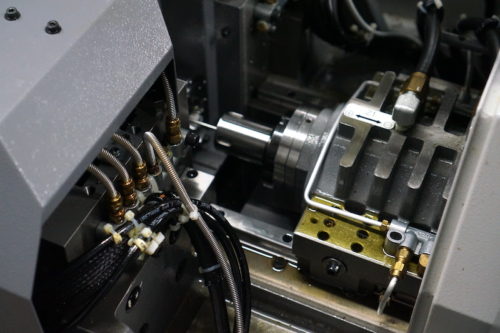
Multi-Axis CNC Machining
The machine tools typically used for high-precision CNC machining have what is known as multi-axis capabilities. With multi-axis machining, processes can be performed simultaneously and save substantial setup time, leaving less room for human error that may occur during part repositioning.
Most standard CNC tools work on at least 3 axes, allowing work on the X, Y, and Z linear axes at the same time. Multi axis precision machining, however, typically relies on 4 to 5-axis machining for its efficiency and superior capabilities. With the addition of the A/C and B axes, 4 to 5-axis CNC machining offers greater precision and detail and can access the workpiece from virtually any direction.
Generally, 4 to 5-axis machines are the bare minimum for precision machining. Multi-axis machines are available with up to 9 axes of motion, providing the ultimate in precision machining. Multi-axis CNC machining is frequently used to manufacture medical and aerospace parts, as well as automotive parts and components for power generation.
Swiss Machining
Swiss machining is a specific type of CNC machining which creates parts by bringing the stock to the tool rather than the other way around. They provide a great degree of precision among the various types of CNC machining. Extremely accurate Swiss machining can achieve tolerances within ±0.0001 inches.
Once tooling is set up, Swiss machine tools can often run unattended for long periods of time, facilitating greater production volumes with less required labor. The superior precision of Swiss machining is extremely well-suited to producing components and parts for robotics, custom pins, surgical tools, aerospace, custom ferrules, electronics, and precision tooling, among others.
Learn More About the Advantages of Swiss Machining
Applications of Precision Machining
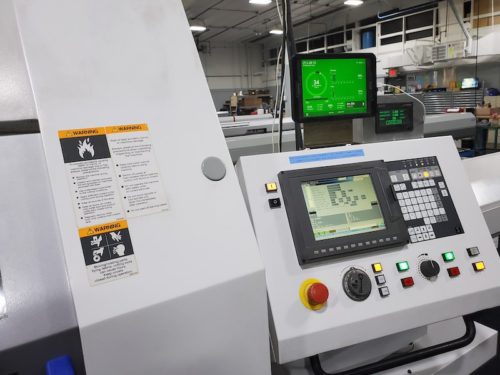
- Tight tolerances. With the right equipment available, precision machining can produce parts with tolerances as small as ±0.0001″.
- Repeatability. Successful precision machining means that parts must be able to be machined to the same tight tolerances repeatably from part to part.
- Volume. Precision machining practices can handle virtually any production volume requirement ranging from prototypes to high-volume production runs and blanket orders.
Suitable Materials for Precision Machining
Precision machining produces high-quality, exacting parts from a wide variety of materials. Frequent materials used for precision machining include:
- Aluminum
- Brass
- Bronze
- Carbon steel
- Copper
- Plastics
- Stainless steel
- Steel
- Titanium
- Tool steel
- Exotic alloys
Precision Machining From Dongguan CNC Machining
At Dongguan CNC Machining, we specialize in precision machining using our state-of-the-art equipment. Our expertise and experience leave us especially well-prepared to manufacture small and complex parts. Request a quote today to see how our precision machining capabilities can serve your project, or contact us with any questions you may have.
Types of Precision CNC Machining
Using computer numerical control (CNC) technology, precision CNC machining removes excess raw material from a workpiece to create a functional finished product. CNC machining services are necessary to create precision machined components for nearly every industry, including automotive, aerospace, medical, and electronics.
To determine which service is right for you, learn more about the five main types of CNC machining.
What are the Different Types of Precision CNC Machining?
Different machines perform different types of CNC precision machining. But every CNC machine can be programmed to achieve specialized features and tight tolerances that are not possible through conventional machining.
CNC Lathes and Turning Machines
CNC lathes and turning machines rotate the workpiece while the cutting tool removes material around the outer diameter to produce the desired component. A CNC Swiss lathe is a type of CNC lathe whereby a guide bushing holds the material as it rotates and slides into the machine. Swiss lathes provide added support and produce tighter tolerances.
CNC Milling Machines
Unlike lathes, CNC milling machines hold the workpiece in place while the cutting tools rotate. As a result, milling can produce more complex shapes and features, such as shallow cavities, slots, and threads.
CNC Laser Machines
CNC laser machines use a highly precise laser beam to cut or engrave sheet material. To make cuts, the laser’s heat melts or vaporizes excess material. CNC lasers can create more complex designs than lathes or mills and produce edges that do not require finishing. This method is often used to decorate or brand finished components.
CNC Electrical Discharge Machines (EDM)
A CNC electric discharge machine (EDM) uses electricity to change materials into specific shapes. The electrode wire can produce focused heat at nearly 11,650 °C to melt away material from a workpiece, which is flushed with liquid to create the desired product. EDM is best for creating small, precise holes, tapers, slots, and angles in very hard metals.
CNC Plasma Cutting Machines
CNC plasma cutting machines use a powerful plasma torch to cut and shape workpieces. The torch can produce heat up to 27,760 °C to melt away excess material. The only limitation to this method is that the workpiece must be electrically conductive, which includes the metals aluminum, brass, copper, steel, and stainless steel.
Precision CNC Machining by Dongguan CNC Machining
Before starting your CNC machining project, consider the required features, tolerances, materials, and performance of the finished components. Dongguan CNC Machining is a leading provider of precision CNC machining services including CNC swiss-style machining and CNC milling for small parts. We have delivered tailor-made CNC machining solutions to businesses throughout the industrial, aerospace, defense, and medical fields. Contact us to learn more or request a quote today.
Materials Used With Turned Metal Parts
Machining processes such as precision turning use a wide range of materials to form standalone parts or components of machinery. Various metals and plastics offer different properties that affect the functionality of the final product; however, these properties can impact how a certain material responds to the turning process. In this blog post, we’ll cover the benefits and features of different materials and how they react to the turning process.
Metals Used in CNC Precision Turning
CNC precision turning often uses metal alloys for creating parts and products. Different factors determine which metal is suitable for the application, including the available budget for a project, the required properties of the completed part, and the metal’s compatibility with the precision turning process. Some of the metals used for precision turned parts include:
Aluminum
Aluminum is often used in precision turning because it is lightweight, non-magnetic, inexpensive, corrosion-resistant, and easy to machine. Aluminum machining allows for tight tolerances even for complex or intricate parts. Aluminum can also be plated with other materials to increase its conductivity and hardness, providing a less expensive alternative to copper, steel, or stainless steel.
Brass
Brass is a very cost-effective material choice for precision turned components that don’t require high levels of strength. Brass machining comes with a variety of benefits, including a clean finish, easy machining, and well-held tolerances and threads. This metal is ideal for use in more complex parts that include sophisticated details; however, it’s not suitable for vacuum applications or semiconductor products because of its tin and zinc content.
Copper
Copper is a more expensive but versatile choice for CNC precision turning. This metal is naturally corrosion-resistant, electrically conductive, and nonmagnetic. Copper responds well to precision turning; however, it does not hold tolerances as well as other metals such as aluminum. This metal is a great choice for hardware components and electric parts.
Titanium
Titanium is a very popular option for precision turning due to its heat resistance, corrosion resistance, and significant strength-to-weight ratio. Additionally, titanium is lightweight, biocompatible, and inert, making it suitable for various applications ranging from medical components to aviation parts. However, the downsides of titanium include its higher price and difficulty to machine.
Steel
Many manufacturers use steel for its durability and strength. The properties of steel alloys depend on the specific grade, and different alloying elements increase the material’s overall machinability. Some specific uses for steel materials include industrial applications, oil & gas, and automotive manufacturing. However, this metal is vulnerable to corrosion without plating.
Stainless Steel
Stainless steel is a desirable material option for CNC precision turning due to its corrosion resistance and strength. It also offers an attractive appearance and retains its durability, making it an ideal choice for consumer, commercial, and medical products. However, its strength and hardness often make stainless steel machining more challenging.
Carbon Steel
Carbon steel features higher carbon levels that contribute to its particularly hard and durable nature. Carbon steel can be machined; however, its machinability decreases with the increased hardness of each carbon steel grade. Following the production process, carbon steel is highly damage-resistant, dimensionally stable, and maintains its characteristics when exposed to high temperatures.
Other Materials Used for Turned Precision Parts
In addition to metal materials, certain plastics are compatible with precision turning processes for a wide range of products and components. These include:
Basic Plastics
Basic plastics offer an inexpensive alternative to metals and conductive materials. Many industries use basic plastics as they are inert and can be modified to fit various properties. Plastic machined parts are used in a wide range of industries including electronics, medical, industrial, and more.
Engineering Plastics
Engineered plastics have become increasingly popular in many applications over the years, as they offer many of the same strengths as their metal counterparts. They can be made with various enhanced properties, making engineered plastics a common alternative to aluminum and quarts in semiconductor applications. They can also self-lubricate and are easy to clean, making them ideal for medical instruments.
Learn More About Dongguan CNC Machining’ CNC Turning Capabilities
If you require dependable turning and other precision machining services, turn to the experts at Dongguan CNC Machining. Since 1996, we’ve provided our customers with high-quality CNC machined parts, with a focus on Swiss-type machining processes. We specialize in small, complex parts and are proud to serve industries such as aerospace, defense, medical, and industrial.
For more information about our services and capabilities, contact us today or request a quote to begin your next CNC turning project.

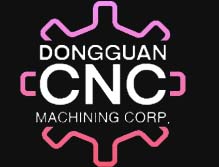

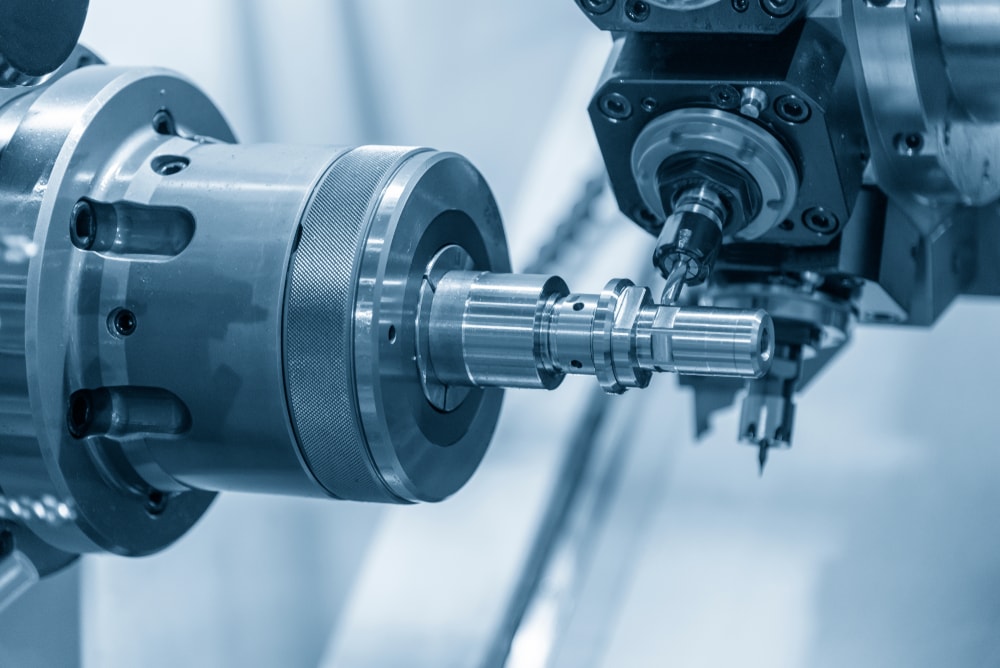

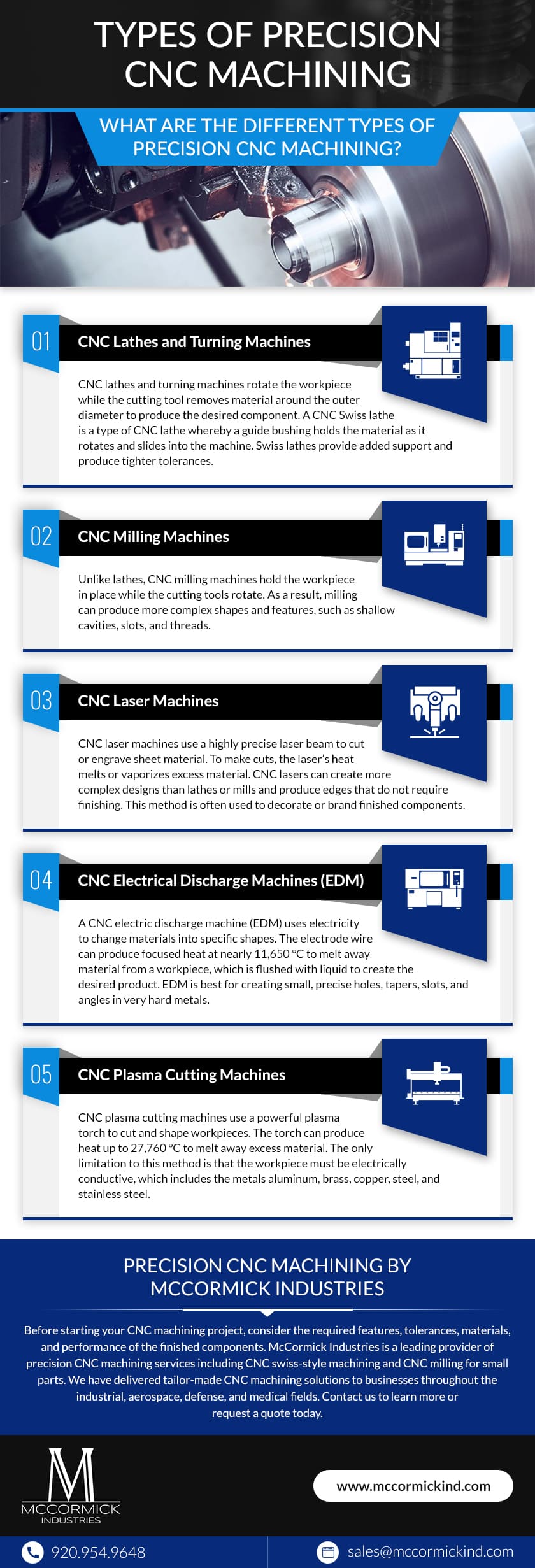
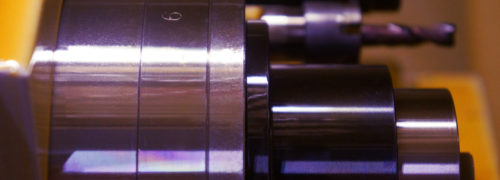
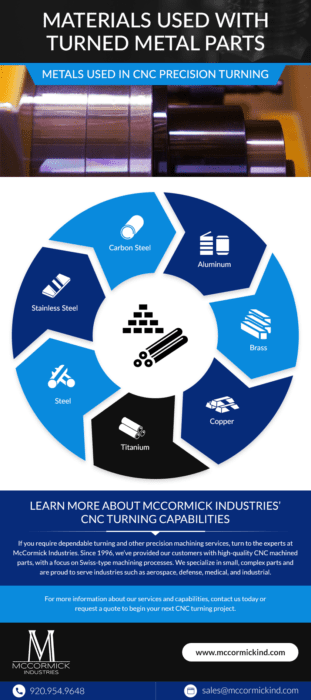
 Email This Post
Email This Post